
Olearia axillaris, commonly known as coastal daisy-bush, coast daisy-bush or coastal daisybush is a species of flowering plant in the family Asteraceae and is endemic to coastal areas of Australia. It is an erect, bushy shrub with densely cottony-hairy branchlets, aromatic, linear to narrowly elliptic or narrowly lance-shaped to egg-shaped leaves with the narrower end towards the base and small white and yellow, daisy-like inflorescences.
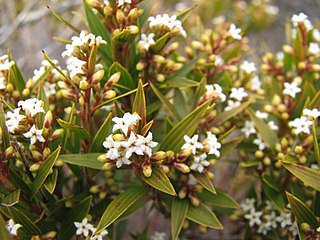
Leucopogon neurophyllus, commonly known as veined beard-heath, is a species of flowering plant in the heath family Ericaceae and is endemic to Victoria in Australia. It is a dense shrub with many branches, erect, narrowly elliptic leaves, and white, tube-shaped flowers that are densely bearded inside.

Grevillea oligantha is a species of flowering plant in the family Proteaceae and is endemic to southern Western Australia. It is dense shrub with many erect branches, egg-shaped, lance-shaped or linear leaves, and groups of up to six brownish-yellow, orange or reddish-brown flowers with a pale yellow to reddish style.
Thryptomene johnsonii is a species of flowering plant in the family Myrtaceae and is endemic to a restricted area of Western Australia. It is a bushy shrub with rigid branches, egg-shaped leaves with the narrower end towards the base and pink flowers with five petals and usually eight stamens.

Leucopogon plumuliflorus is a species of flowering plant in the heath family Ericaceae and is endemic to the south-west of Western Australia. It is a weakly erect shrub with egg-shaped leaves and spikes of white or pinkish-white, tube-shaped flowers.
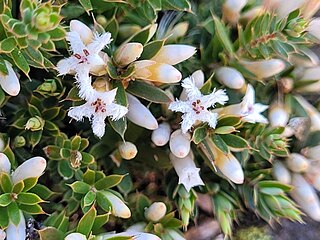
Leucopogon fraseri is a species of flowering plant in the heath family Ericaceae and is native to south-eastern continental Australia and New Zealand, where it is known as Styphelia nesophila, pātōtara, or dwarf mingimingi. It is a prickly, prostrate to trailing or low-growing shrub with egg-shaped leaves, and erect, tube-shaped white flowers usually arranged singly in leaf axils.

Leucopogon tamminensis is a species of flowering plant in the heath family Ericaceae and is endemic to the southwest of Western Australia. It is a slender shrub with many branches, overlapping triangular to egg-shaped leaves and white, tube-shaped flower arranged singly in upper leaf axils.

Prostanthera canaliculata is a species of flowering plant in the family Lamiaceae and is endemic to the south-west of Western Australia. It is a small, erect shrub with hairy branchlets, narrow egg-shaped to narrow elliptical leaves and pale blue or pale violet to white flowers with no markings.
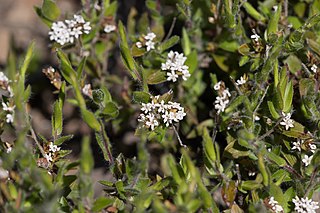
Leucopogon concurvus is a species of flowering plant in the heath family Ericaceae and is endemic to a restricted part of South Australia. It is a slender shrub with egg-shaped leaves, and white, tube-shaped flowers arranged along the branches.
Leucopogon corymbiformis is a species of flowering plant in the heath family Ericaceae and is endemic to the south-west of Western Australia. It is an erect shrub with glabrous branchlets, narrowly elliptic to egg-shaped leaves with the narrower end towards the base, and white, bell-shaped flowers arranged in leaf axils and at the ends of branches.

Leucopogon allittii is a species of flowering plant in the family Ericaceae and is endemic to the south-west of Western Australia. It is a rigid, glabrous shrub that typically grows to a height of about 30 cm (12 in) and has egg-shaped or lance-shaped leaves and tube-shaped, white flowers.

Leucopogon breviflorus is a species of flowering plant in the heath family Ericaceae and is endemic to the south-west of Western Australia. It is an erect, spindly, glabrous shrub that typically grows to a height of up to about 1.5 m. It has oblong to lance-shaped or linear leaves 4–9 mm (0.16–0.35 in) long on a short petiole and with a small, rigid point on the tip. The flowers are borne singly or in pairs in leaf axils on a short peduncle with small bracts and bracteoles about half as long as the sepals. The sepals are about 2 mm (0.079 in) long and the petals white and about 4 mm (0.16 in) long, the petal lobes longer than the petal tube.
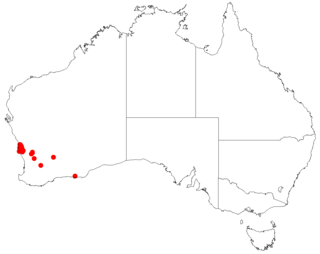
Leucopogon crassiflorus is a species of flowering plant in the heath family Ericaceae and is endemic to the south-west of Western Australia. It is an erect shrub with few branches and that typically grows to a height of 30–60 cm (12–24 in). Its leaves are broadly egg-shaped with the narrower end towards the base, to more or less round, 2–3 mm (0.079–0.118 in) long with a stem-clasping base. The flowers are borne singly or in pairs in upper leaf axils on a short peduncle, sometimes in small clusters, and with small bracts and bracteoles at the base. The sepals are about 4 mm (0.16 in) long and the petals about 6.5 mm (0.26 in) long, the petal lobes longer than the petal tube.

Leucopogon diversifolius is a species of flowering plant in the heath family Ericaceae and is endemic to the south-west of Western Australia. It is an erect shrub with more or less glabrous young branchlets, spirally arranged, erect, broadly egg-shaped, elliptic or more or less circular leaves, and white, broadly bell-shaped flowers sometimes with a pink tinge.

Leucopogon exolasius, commonly known as Woronora beard-heath, is a species of flowering plant in the heath family Ericaceae and is endemic to a small area of New South Wales. It is an erect shrub with oblong or elliptic leaves, and drooping, white, tube-shaped flowers.
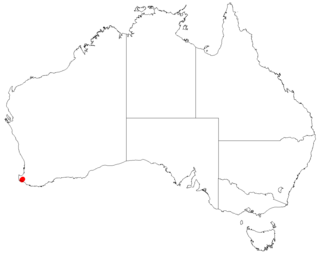
Leucopogon incisus is a species of flowering plant in the heath family Ericaceae and is endemic to a small area in the far south of the south-west of Western Australia. It is a delicate, erect or sprawling shrub with glabrous young branchlets, spirally arranged, erect, narrowly egg-shaped to narrowly elliptic leaves, and white or pale pink, narrowly bell-shaped to more or less cylindrical flowers.

Leucopogon opponens is a species of flowering plant in the heath family Ericaceae and is endemic to the south-west of Western Australia. It is an erect, slender shrub with its leaves arranged in opposite pairs, and white, tube-shaped flowers.
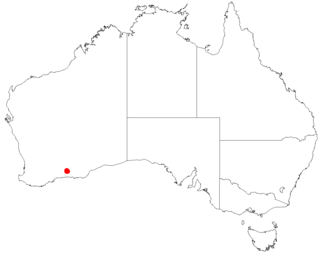
Leucopogon rugulosus is a species of flowering plant in the heath family Ericaceae and is endemic to a restricted part of the south-west of Western Australia. It is an erect shrub with a single stem at ground level, elliptic or egg-shaped leaves with the narrower end towards the base, and erect clusters of three to nine white, tube-shaped flowers.

Leucopogon strongylophyllus is a species of flowering plant in the heath family Ericaceae and is endemic to the southwest of Western Australia. It is an erect shrub with crowded egg-shaped or round leaves and white, tube-shaped flower arranged singly or in pairs in leaf axils.
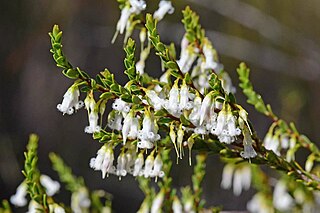
Leucopogon woodsii, commonly known as nodding beard-heath, is a species of flowering plant in the heath family Ericaceae and is endemic to southern continental Australia. It is a slender shrub with more or less erect, egg-shaped leaves, and pendent white, tube-shaped flowers with densely bearded lobes.



















